
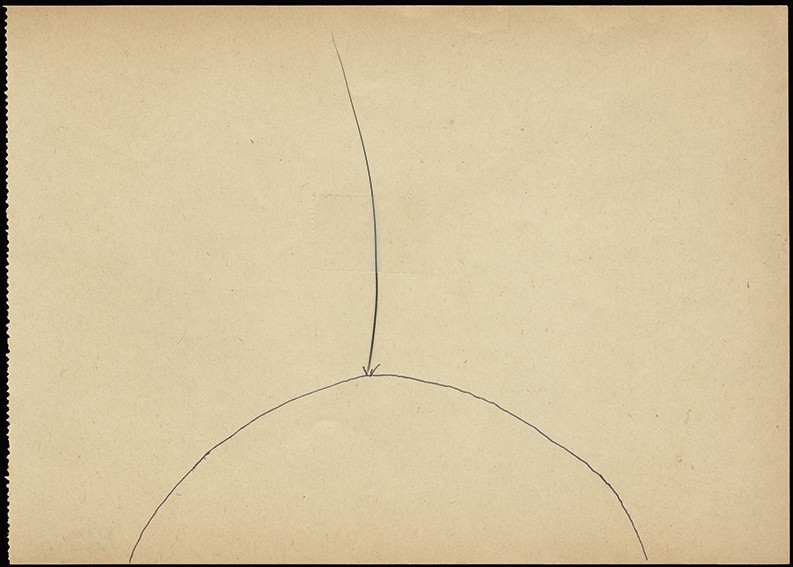
Untitled

Untitled
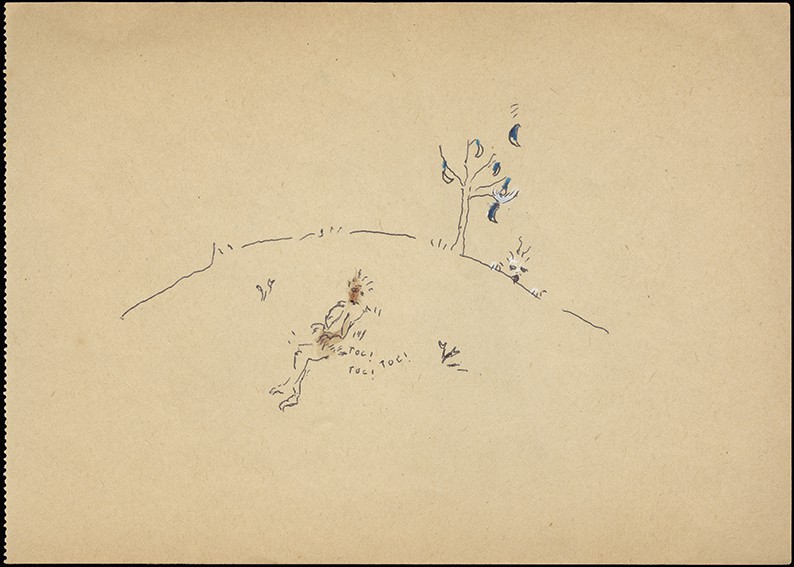
Three sharp blows on a hill are reflected in your head
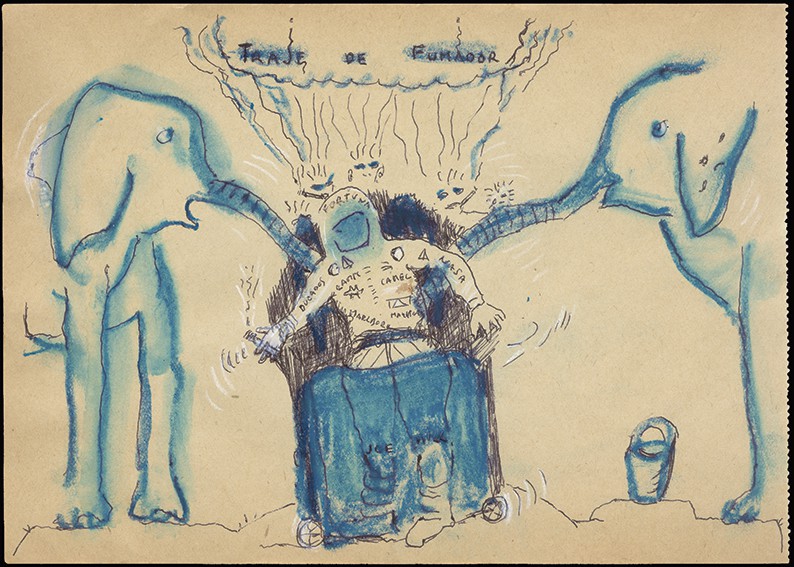
A smoker’s suit

Make peace amongst the fingers. G.B.

Field of bottoms
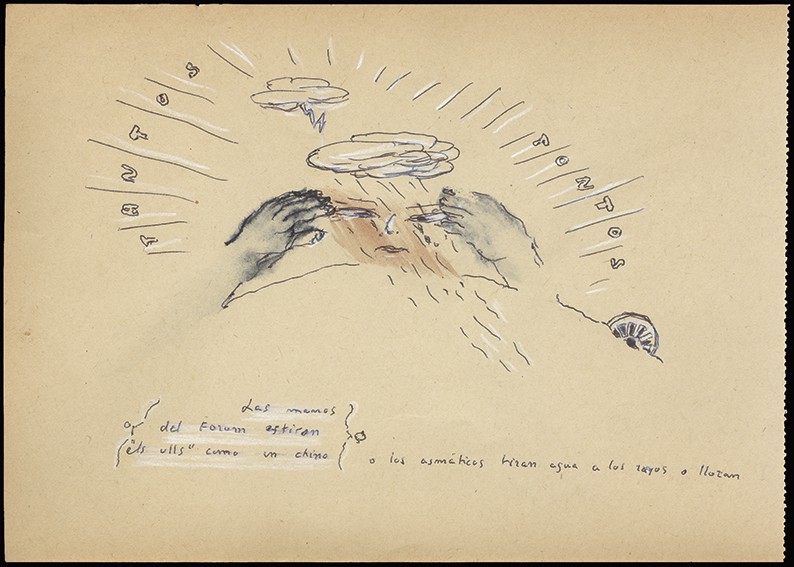
The hands of the Fòrum turn our eyes into slits like a Chinese or the asthmatics throw water at the rays or cry
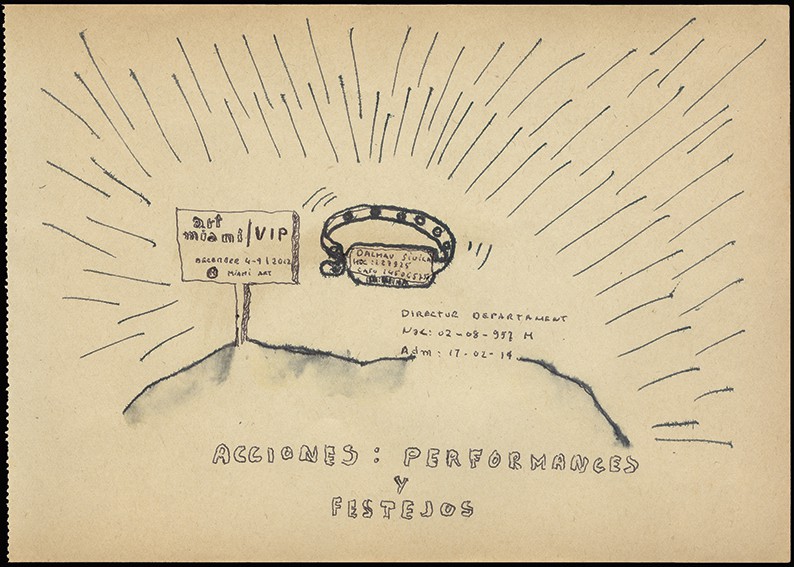
Actions: performances and celebrations

1936-1939

Modern San Sebastian of Mosquitia

What if Switzerland were in Africa?
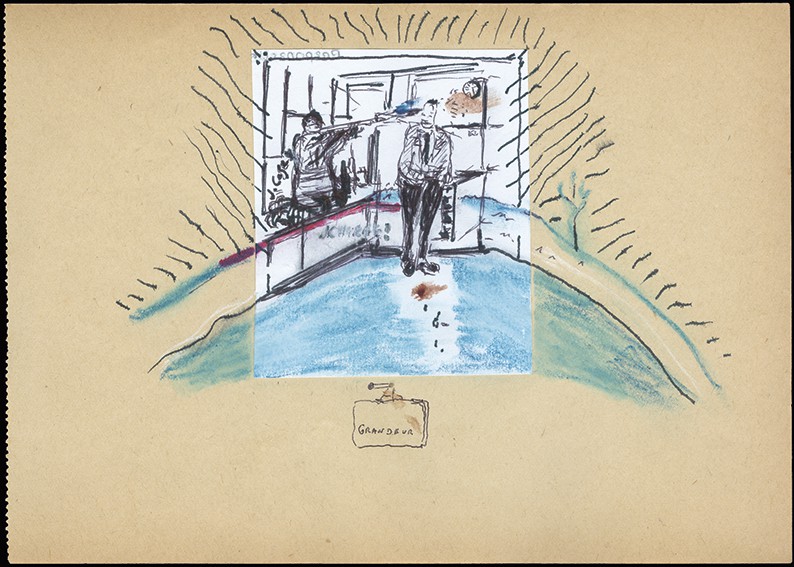
All true knowledge is obscure. A.A.

Untitled
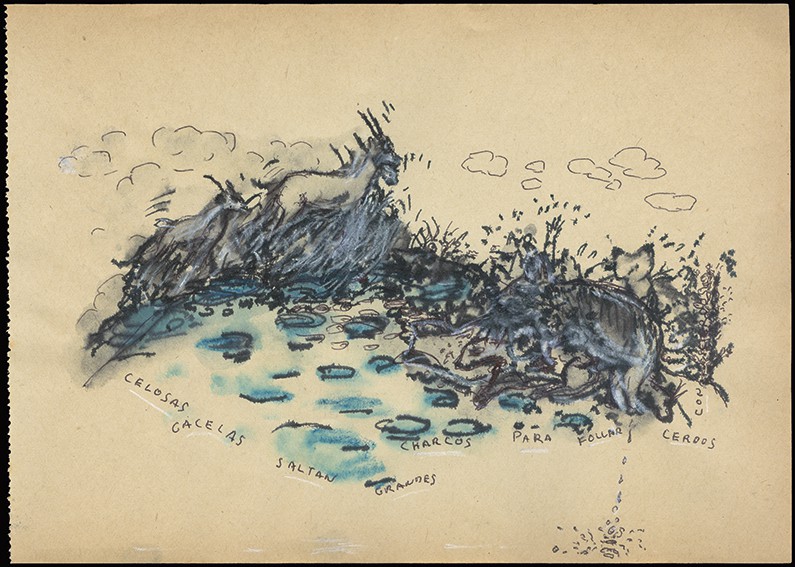
Jealous gazelles leap large puddles to fuck with pigs (Phrase BCN)

Purgatory

The other duel. J.L.B.

Mythical beings: the Phoenix, the Yeti, exhibition curators, dragons, Saint-Exupéry...

Lice were at once our shame and our honour. J.G.
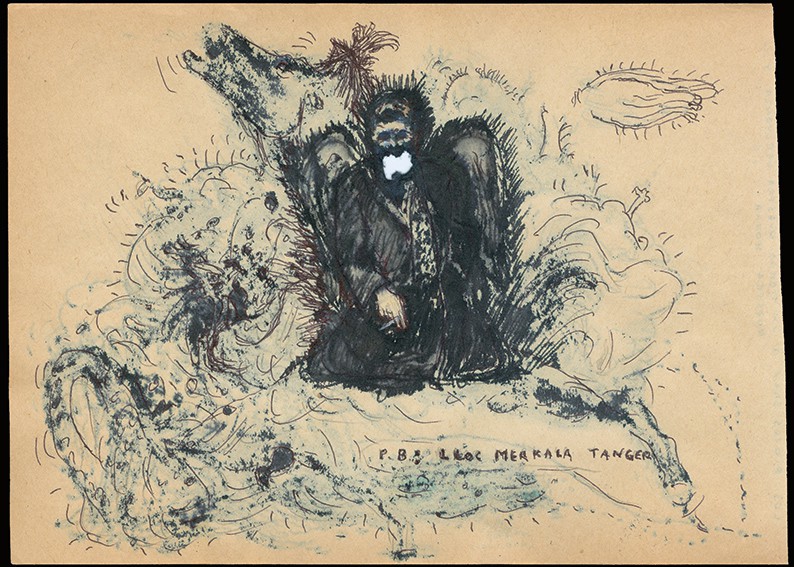
Merkala. Tanger

Untitled
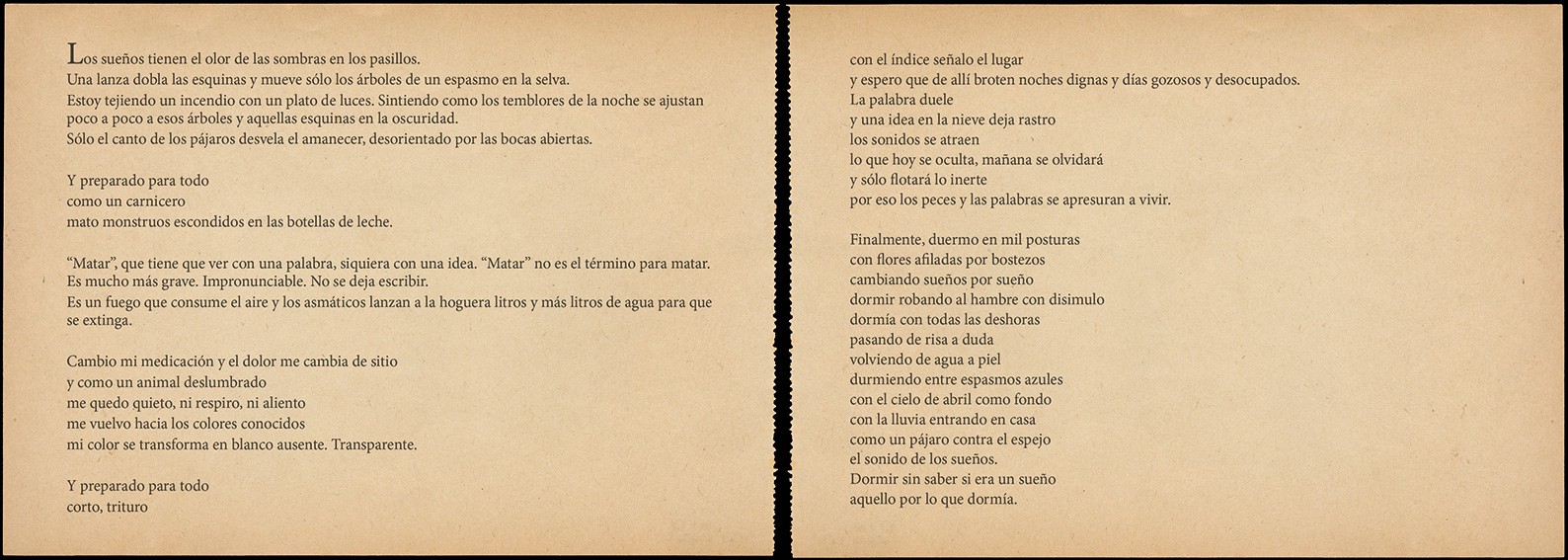
Dreams
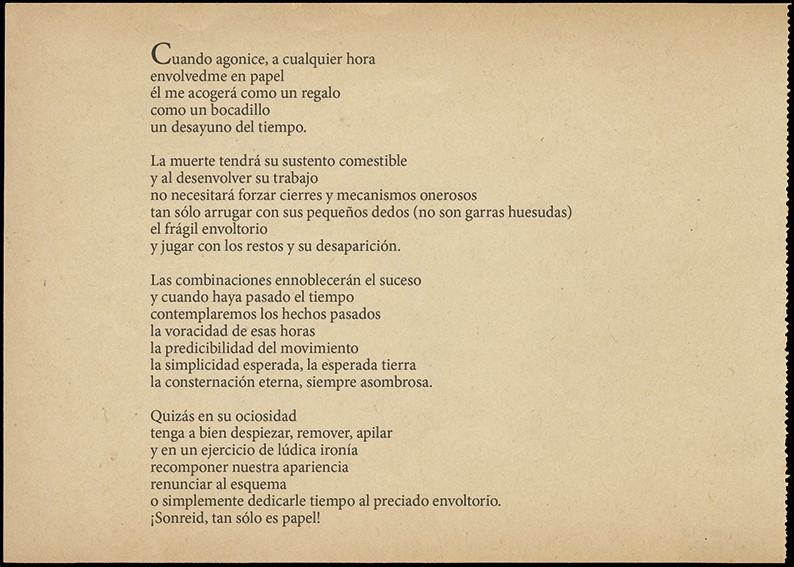
It's only paper

A girl
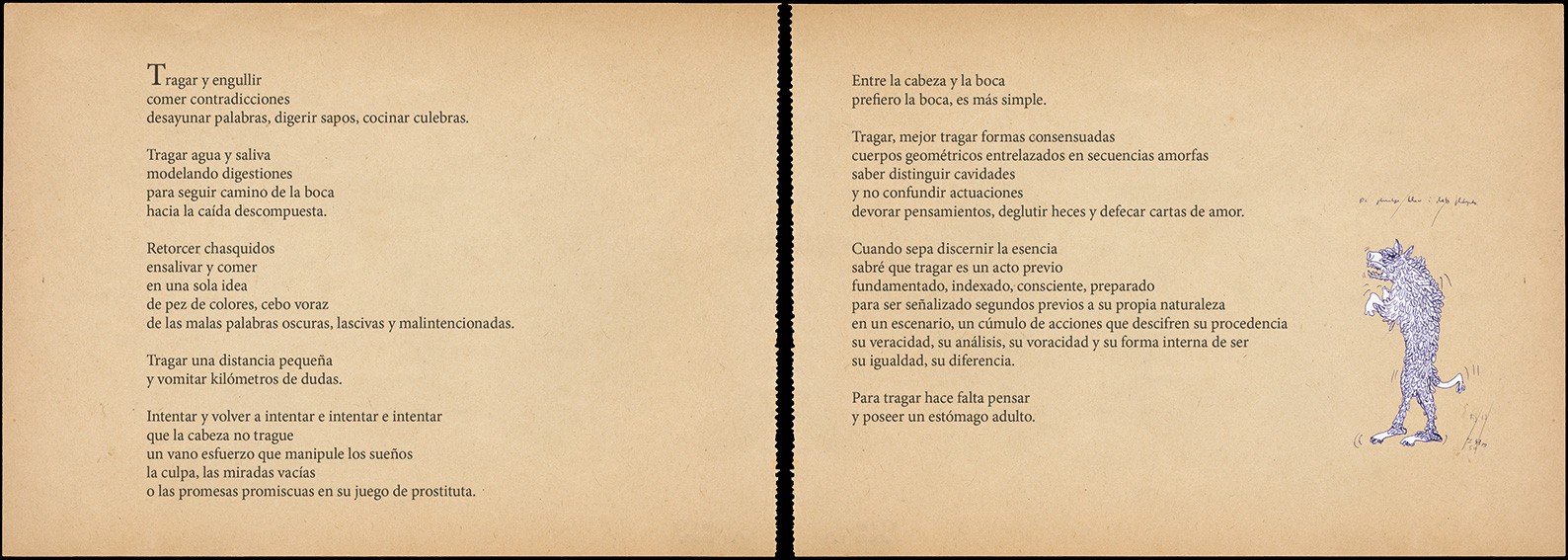
To swallow
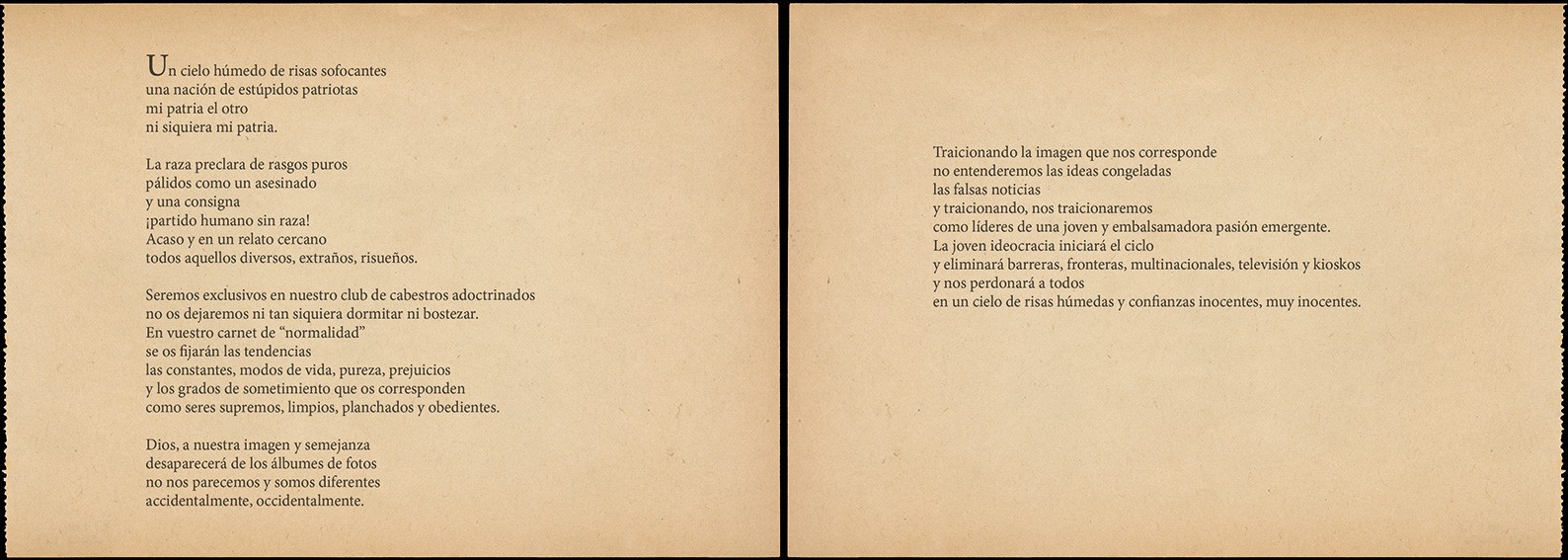
Innocent idiocracy

Un lugar arriba (colinas)
A place above (hills). 1998-2015
/ESP/
APLICACIONES TEÓRICAS EN UNA COLINA
Vivir en un lugar alto produce un sentimiento de irrealidad.
Observas sobre una postal, un cuadro de mayor contenido, observas y aplicas toda tu incontinencia mental.
Es a la vez íntimo y explícito.
La vida pasa a través de las nubes, del suelo. Derivas lecturas de todo tipo sobre una visión hipnótica.
La colina forma parte de tu propio yo, de una manera natural. Eres a la vez cuerpo, cabeza, extremidades, y como tal totalidad, estableces las reglas del juego.
Oyes tres golpes en el suelo y sabes que la colina, en sí misma, vibra como una unidad.
Unos gritos dan lugar a un relato distanciado.
La sombra de las nubes oscurece metros de superficie.
El paso decidido establece surcos de dirección.
Cuando sube un animal, un humano o se deja algo, se significa su presencia. Y aquello no significativo, pasa a ser el anfiteatro invertido del espectador.
Todo cabe dentro de un lugar que se autodefine y el escenario propicia cualquier fantasía.
Siempre he apreciado el relato de "El otro duelo" desde lo alto de un cerro. En ocasiones simplemente se convierte en un buen observatorio, donde mirar a la luna con tres perros y un montón de billetes de dos pounds en el bolsillo.
Aplicaciones teóricas en una colina, es un encuentro con un cuaderno de los años 40, donde se genera una colección de dibujos a tinta. Responden a la ideación de proyectos, censurados previamente o entendidos como testamento artístico, durante más de veinte años. La interrelación de lo leído, lo vivido, lo pensado y lo ficcionado, encuentran en él la singularidad de un gesto obligado, mirar desde arriba y presagiar la opacidad.
/ENG/
THEORETICAL APPLICATIONS ON A HILL
Living in a high place causes a feeling of unreality.
You observe on a postcard a picture with greater content, you observe and apply all your mental incontinence.
It is at once intimate and explicit.
Life passes through the clouds, the ground. You derive readings of all kinds over a hypnotic vision.
The hill forms part of your very self, in a natural way. You are at once body, head, extremities and, as such a whole, you establish the rules of play.
You hear three knocks on the ground and know that the hill, in itself, vibrates as a whole.
Shouting generates a distanced narrative.
The shadow of the clouds darkens metres of surface.
The firm step establishes furrows of direction.
When an animal or a human goes up, or something is left, their presence is signified. And that which is not significant becomes the spectator’s inverted amphitheatre.
Everything fits into a place that is self-defined and the setting encourages all kinds of fantasies.
I have always appreciated the short story “The Other Duel” from the top of a hill. At times, it merely becomes a good observatory from which to look at the moon with three dogs and a stack of two-pound notes in one’s pocket.
Theoretical Applications on a Hill is a meeting with a notebook from the 1940s, in which a collection of ink drawings is generated. These “applications” refer to the conception of projects, previously censured or understood as artistic testament for more than twenty years. The interrelation between what is read, what is experienced, what is thought and what is fictionalised finds in it the singularity of an obligatory gesture, looking from above and foretelling opacity.


























